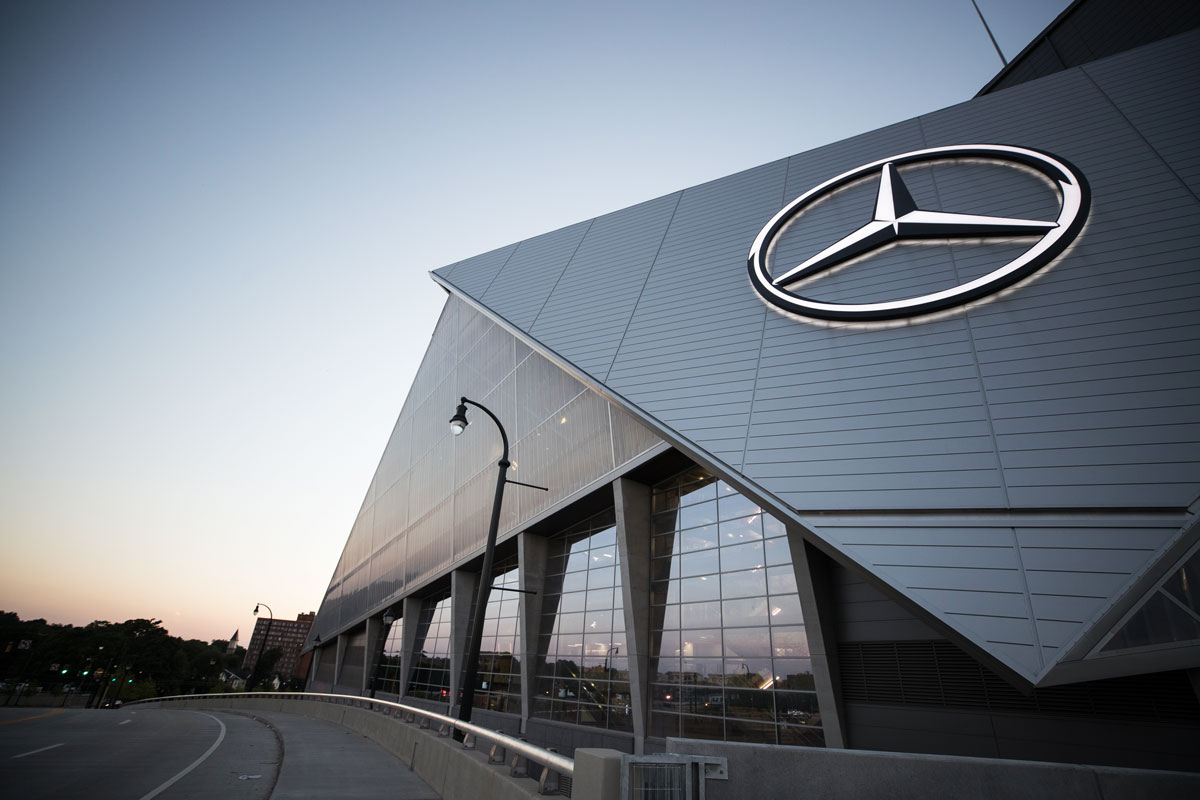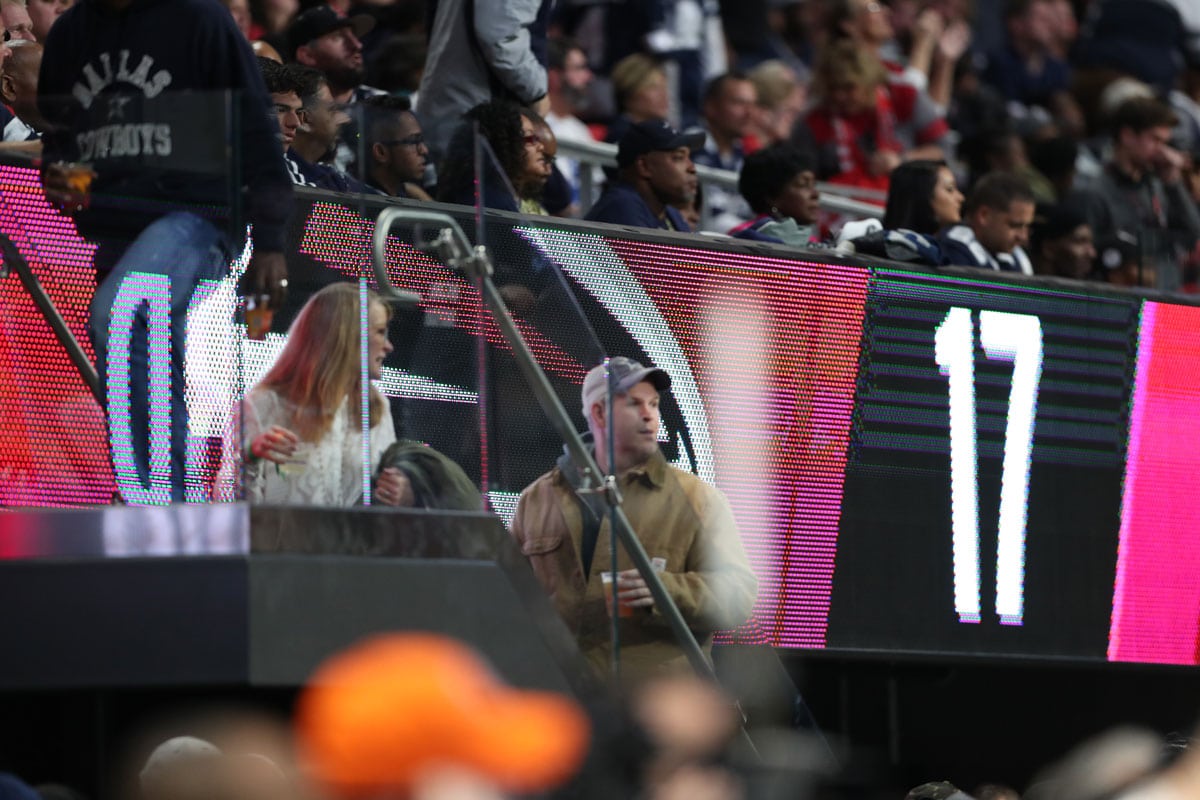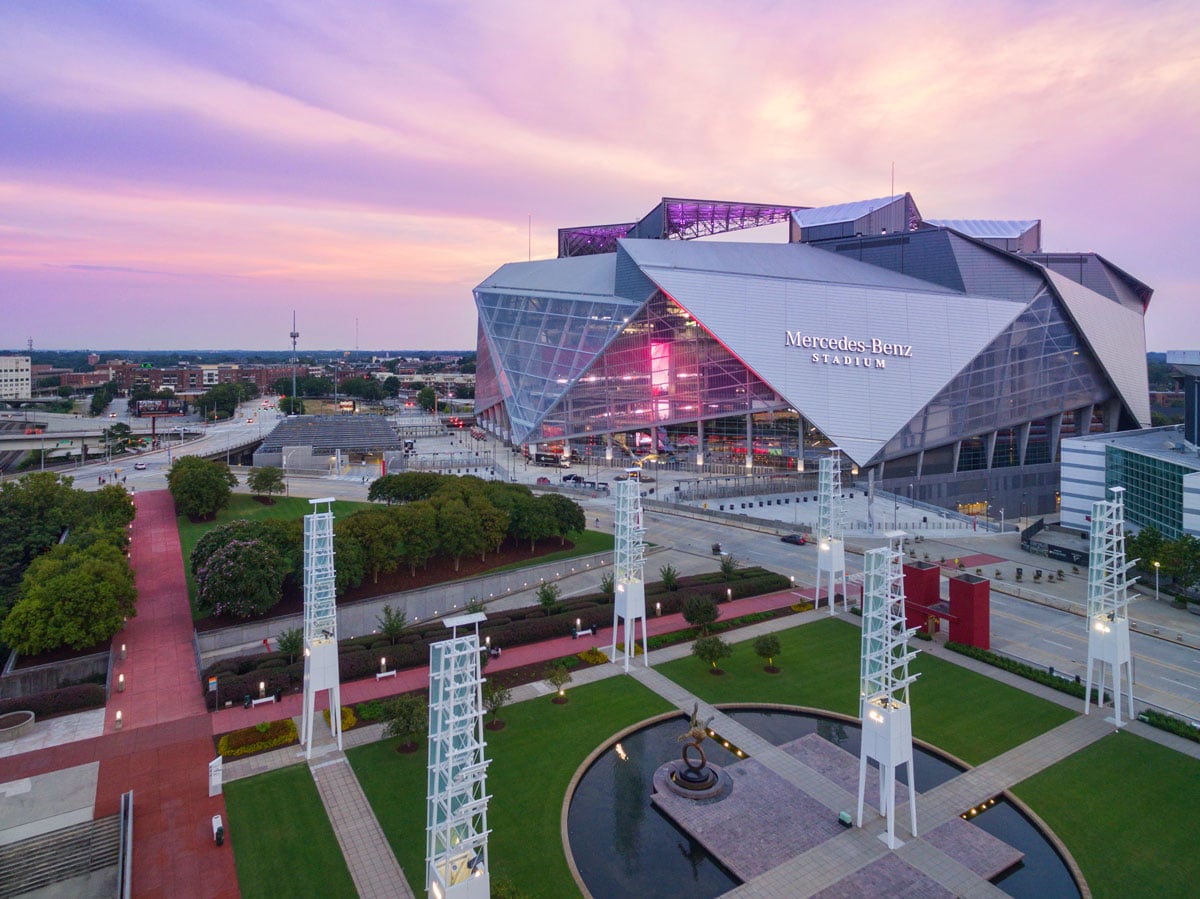Story at a glance:
- 4,000 solar panels helped the Mercedes Benz Stadium in Atlanta achieve LEED Platinum certification.
- HOK designed the stadium to meet the mission of Arthur Blank, owner of the Atlanta Falcons.
- A stormwater management program includes an on-site 2.1 million gallon stormwater vault, bioswales, and a 680,000-gallon cistern for collecting and reusing rainwater.
When Arthur Blank, owner of the Atlanta Falcons and Atlanta United, and his team of designers envisioned the new Mercedes-Benz Stadium in Atlanta, on its way to becoming one of the greenest cities in the US, they set out to do what had never been done.
“We wanted to redefine the stadium experience,” says Scott Jenkins, who joined the team in 2014 as stadium general manager, just as they broke ground to bring the Mercedes-Benz Stadium design to life. “Every step of the way, while we were focused on the fan experience, we were also focused on making the venue as environmentally smart as we could,” says Jenkins, a pioneer in the green building movement in sports and chairman of the Green Sports Alliance.
Achieving LEED Platinum

Photo courtesy of AMBSE
The 2 million-square-foot, $1.5 billion project was designed by HOK, who worked with Buro Happold Engineering and Hoberman Associates to complete the stadium in July 2017. Home to the Atlanta Falcons and the new Atlanta United soccer club, Mercedes-Benz Stadium opened its doors to a sell-out crowd of 72,000 for its first soccer match in August 2017. In November 2017 the stadium was awarded LEED Platinum, making it the first professional sports venue in the world to achieve that level. To be LEED-certified, a building must acquire 40 points—to reach LEED Platinum, an additional 40 must be acquired. Blank and his team scored 88 points, carefully considering every line item in categories like building materials, energy, water, and site location. Jenkins says, “Our approach was to go after everything.
Most visibly the stadium’s sustainability features include 4,000 solar panels placed not on the rooftop but, as part of the aesthetic, at eye level on ticket entryways and parking lot canopies. The panels generate enough energy to power nine Falcons games or 13 United matches. The advanced stormwater management program includes an on-site 2.1 million gallon stormwater vault, bioswales, and a 680,000-gallon cistern for collecting and reusing rainwater for a cooling tower and irrigation. This combined with water-efficient fixtures resulted in a 47% reduction in domestic water use. Plus, given the stadium’s location west of downtown—where neighborhoods have been plagued by flooding for years—it was important to Blank and his team to reduce the venue’s contribution to local storm events.
LED Lighting and More

Photo courtesy of AMBSE
Transportation and renewable energy were key to reaching Platinum. The stadium boasts two MARTA metro train stops, electric car charging stations, bike valet on major event days, and pedestrian-friendly pathways.
Of course, if you’ve heard anything about Mercedes-Benz Stadium, you’ve heard about the halo board—at 350 tons and 58 feet high by 1,100 feet around, the stadium’s impressively massive video screen is more than 63,000 square feet of LED lighting. In fact, all of the venue’s lighting is LED, which lasts 10 times longer than standard lighting and reduces energy usage by as much as 60%. “Everything about this building was designed very intentionally to be innovative and groundbreaking from an environmental standpoint,” Jenkins says.
Visitors love the sustainable elements as well as the architecture and technology—like the eight-petal ocular roof. Then there’s the stadium’s food and beverage experience—number one in the NFL and MLS, incorporating edible landscaping and a recycling program. “It’s nice to have a highly visible building doing things the right way,” Jenkins says. “It was Arthur’s vision from the beginning to challenge the whole project team to push the envelope.”
Exceeding Expectations

Photo courtesy of AMBSE
As with any major construction, Blank and his team faced challenges due to the project’s complexities in size, time, and budget.
“When you’re building a sports venue in a downtown urban environment, it’s already complex,” Jenkins says. “When you’re trying to design a building that’s architecturally stunning, you have to get creative. It’s credit to the whole project team for its great collaborative effort and commitment, but first and foremost, to Arthur for his vision,” says Jenkins, noting that Blank has been a leader in sustainable and socially responsible building practices for years, having constructed the first LEED Gold building in Georgia in 2004—the Arthur M. Blank Family Foundation office in Atlanta.
Mercedes-Benz Stadium has experienced stunning success so far, with a college football championship under its belt, the overwhelming reception of Atlanta United, and hosting the upcoming NFL Super Bowl LIII in 2019.
“We have exceeded our own expectations—people are inspired by the building and entertained at a world-class level,” Jenkins says, highlighting that they will continue to invest in water and energy conservation, efficient waste strategies and material sourcing, and evolving the stadium’s green cleaning program. “We’ve built this beautiful LEED Platinum venue. Now we want to focus on how we can operate as efficiently as possible while continuing to elevate the fan experience.”


